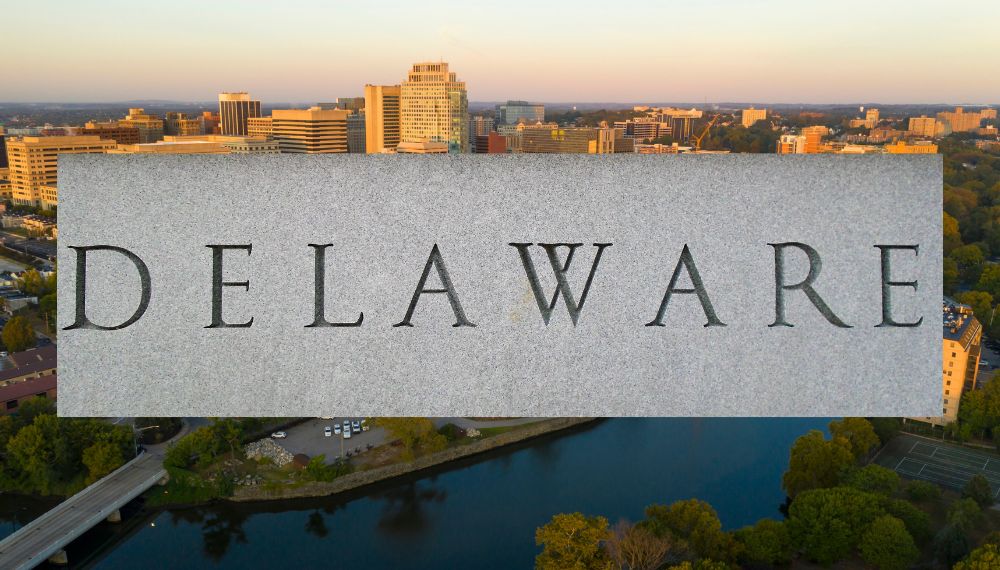How Does Fractional Ownership in Real Estate Work?
- April 12, 2023
- manoj
- Category: Real Estate

Fractional property ownership is an increasingly popular investment model for real estate.
The idea is straightforward: a group of investors pull their resources to purchase and co-own a property, with each investor possessing a portion of the property corresponding to their investment.
Fractional ownership can be an appealing investment choice for those who want to invest in real estate without bearing the complete financial responsibility of property ownership.
What is Fractional Ownership in Real Estate?
Fractional ownership is a method of investing in real estate where investors pool their resources to buy and co-own a property. It allows each investor to own a portion of the property that is proportional to their investment. The specifics of shared ownership arrangements can differ, but investors typically hold between 10% to 50% of the property.
There are several different types of fractional ownership structures, including:
- Tenancy in Common (TIC): In a TIC arrangement, each investor owns a specific percentage of the property and has the right to use it based on their ownership percentage. Investors can sell their share of the property independently, and each investor is responsible for their share of the expenses related to the property.
- Real Estate Investment Trust (REIT): A REIT is a company that owns and operates income-generating real estate properties. Investors can buy shares in the REIT, which entitles them to a portion of the income generated by the properties in the portfolio.
- Limited Liability Company (LLC): In an LLC structure, investors form a company that owns the property, with each investor owning a percentage of the company based on their investment. The LLC manages the property, and investors are shielded from personal liability for any losses or liabilities associated with the property.
Fractional ownership can provide many advantages, such as the ability for investors to participate in pricey assets they couldn’t afford independently, decreasing the hazards associated with investing in one single asset, and offering a broader range of investment opportunities.
Nonetheless, shared ownership has its downsides, such as restricted control over the asset and possible disputes between investors regarding managerial determinations.
Benefits of Fractional Ownership in Real Estate
Fractional ownership can offer investors a range of benefits, including:
- Cost-sharing
Shared property ownership allows individuals to divide the expenses related to possessing a property, like upkeep, renovations, and administration fees. This ownership model can allow smaller investors to participate in the ownership of higher-value real estate assets that may have otherwise been out of reach.
- Diversification
An innovative investment strategy known as fractional ownership allows individuals to spread their investments across a wide variety of real estate properties in different geographical locations. It enables investors to diversify their investment portfolios, minimize risk, and achieve a more balanced investment profile.
- Reduced risk
One way to potentially mitigate risk when investing in real estate is by engaging in the form of ownership known as fractional ownership. This approach involves multiple investors collectively owning a single property, each owning a percentage.
By spreading the ownership this way, investors are only liable for the risks associated with their portion of the property rather than assuming full responsibility for the entire asset. It may offer a more diversified approach to real estate investing and can potentially reduce the negative impact of unforeseen events on a single property.
- Access to different types of properties
Shared ownership or partial ownership may offer interested parties a means to acquire a stake in diverse real estate assets, including business or leisure accommodations, which they might not have previously contemplated investing in.
Suppose a prospective investor is interested in acquiring a luxurious vacation property but may need to possess the financial means to do so independently.
In that case, fractional ownership offers a solution by allowing the investor to purchase a portion of the property with a group of other investors, dividing the expense of ownership and receiving partial access to the property at a reduced cost.
Investing in a small portion of a larger asset, or fractional ownership, is a popular choice for those seeking to diversify their investments and minimize risk.
Fractional ownership allows access to various properties, and successful examples of such investments are abundant.
Risks and Considerations
Investors should carefully evaluate fractional ownership’s potential drawbacks and risks before investing. It is important to consider factors such as:
- Limited control
Investors in fractional ownership structures may have limited control over property management. Decisions such as how the property is managed, who it is rented to, and when it is sold are typically made by the managing partner or company rather than individual investors.
- Liquidity
Fractional ownership structures may need more liquidity, making it difficult for investors to sell their property shares. Unlike publicly traded REITs or other types of securities, finding a buyer for fractional ownership shares may be challenging.
- Legal and financial considerations
Investors should know the legal and financial considerations associated with fractional ownership. It may include understanding the structure of the investment, reviewing legal documentation related to the investment, and evaluating the tax implications of the investment.
- Potential disagreements among investors
When multiple investors own a property together, there is always the potential for disagreements over management decisions or how to handle expenses related to the property.
Before considering fractional ownership investment, investors should conduct a detailed evaluation of the associated risks and considerations.
It’s essential to examine all the relevant legal and financial documents relating to the investment, comprehend the investment’s structure and carefully consider its potential risks.
How to Invest in Fractional Ownership?
Exploring the potential of acquiring fractional ownership can be an intriguing and advantageous prospect for individuals looking to invest. To help with this endeavor, here are a few suggestions to consider when investing in fractional ownership.
- Research opportunities
Some several online platforms and companies offer fractional ownership opportunities. Investors should research these opportunities to find investments that align with their investment goals and risk tolerance.
- Evaluate the investment opportunity
Before investing in fractional ownership, it’s important to evaluate the investment opportunity thoroughly. It may include reviewing the financial and legal documentation related to the investment and understanding the structure of the investment.
- Consider the risks and rewards
Fractional ownership can offer several benefits, but it’s important to consider the potential risks associated with the investment. Investors should evaluate the risks and rewards associated with fractional ownership to determine if it’s the right investment opportunity for them.
- Choose the right platform or company
Some several platforms and companies offer fractional ownership opportunities. Choosing a reputable platform or company with a track record of successful investments is important and can provide the necessary support and guidance throughout the investment process.
When examining a divided ownership prospect, financiers must analyze variables such as the investment model, the anticipated profits, and the likely hazards connected with the investment.
Furthermore, it’s crucial for investors to thoroughly inspect the legal and monetary documentation linked with the investment and seek help from a financial consultant or lawful expert if needed.
Some Examples Demonstrating Fractional Ownership
Shared ownership has proven to be an effective approach in several real estate ventures. Below are a few instances of prosperous fractional ownership investments, along with the key takeaways for investors:
- The St. Regis Aspen Resort
In 2010, a group of investors came together to purchase the St. Regis Aspen Resort in Colorado for $70 million through a fractional ownership structure. The investors collectively owned 20% of the property, with the remaining 80% owned by a real estate investment trust (REIT). The property generated an average annual return of 14% over five years. This investment highlights the potential benefits of fractional ownership in high-end properties and the importance of partnering with a reputable REIT.
- The Fives Beach Resort
In 2013, a group of investors purchased a share of The Fives Beach Resort in Mexico through a fractional ownership structure. The property was managed by a reputable management company, generating high rental income for investors. This investment highlights the potential benefits of investing in vacation properties through fractional ownership and the importance of choosing a property with a strong management team.
- The Kahala Beach Condo
In 2018, a group of investors purchased a 25% stake in a luxury condo at the Kahala Beach complex in Hawaii through a fractional ownership structure. The property was rented out when the investors were not using it, generating high rental income. This investment highlights the potential benefits of investing in high-end properties in desirable locations and the importance of understanding the rental market in the area.
This highlights a collection of instances that display the good advantages of fractional ownership in the real estate sector. These benefits comprise entry to exclusive properties, robust rental earnings, and lowered risk.
Interested parties can obtain valuable insights from these instances, such as the significance of collaborating with reliable management organizations or REITs, conducting thorough assessments of investment prospects, and comprehending the rental market trends in the region.
The Bottom Line
Investing in a small portion of a property can provide an exclusive chance for investors to broaden their investment options in real estate. By collaborating resources, investors can access high-value properties and lessen their risks.
Nevertheless, fractional ownership has potential disadvantages, like limited control and liquidity, which require careful consideration. It’s important for individuals considering fractional ownership to conduct thorough research into the investment platforms or companies, examine legal and financial documentation, and fully comprehend the potential benefits and drawbacks associated with the investment.
FAQs
What is fractional ownership in real estate?
Fractional ownership in real estate is a model where multiple investors come together to purchase and jointly own a property, with each investor owning a share of the property based on their investment.
What are the benefits of fractional ownership in real estate?
Fractional ownership can offer investors several benefits, including cost-sharing, diversification, reduced risk, and access to different properties.
What are the potential risks of fractional ownership in real estate?
Some potential risks of fractional ownership in real estate include limited control, liquidity, legal and financial considerations, and potential investor disagreements.
How can investors evaluate fractional ownership opportunities?
Investors can evaluate fractional ownership opportunities by researching investment platforms or companies, reviewing legal and financial documentation, understanding the potential risks and rewards associated with the investment, and partnering with reputable management companies or REITs.
What types of properties can be invested in through fractional ownership?
Fractional ownership can be used to invest in a range of properties, including high-end vacation, commercial, and residential properties.
How can investors benefit from fractional ownership in real estate?
Investors can benefit from fractional ownership in real estate by accessing high-value properties, diversifying their real estate portfolios, reducing their risks, and realizing strong returns on their investments.




